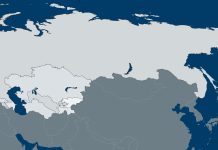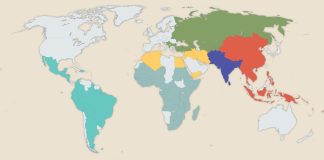Background: The Philippines’ importance lies in its geography, located in the middle of what’s known as the first island chain, giving it – or, more likely, any outside naval power that allies with it – the power to disrupt vital Chinese sea lanes through the South China Sea and Bashi Channel. So China has been trying to pull the Philippines into its orbit with both carrots and sticks. But over the past few months, it has been relying more and more on sticks. Beijing has flooded several sensitive areas with Chinese coast guard vessels and armed fishing fleets to block Philippine fishermen from accessing resource-rich waters and impeding the Philippines’ own coast guard patrols.
What Happened: Scarborough Shoal has long been one of the most hotly contested areas between China and the Philippines. In 2012, the two sides engaged in a monthslong standoff over the reef. The U.S. brokered a mutual withdrawal, which China promptly violated. In 2016, the U.S. reportedly told China that it considered any attempt to transform Scarborough Shoal into another of its artificial island military bases as a red line, and China has refrained from doing so.
But Beijing still effectively controls the waters in and around the shoal, and it periodically uses Scarborough to needle Manila. Over the past couple of weeks, for example, Chinese vessels reportedly have harassed Philippine coast guard vessels sent to patrol the area, sparking outrage in Manila. On Monday, Philippine Foreign Secretary Teddy Locsin Jr. uncorked a truly wild, expletive-laden Twitter thread against China. Defense Secretary Delfin Lorenzana was more diplomatic but still drew a hard line and insisted patrols would continue. President Rodrigo Duterte, who has come under withering political pressure over his perceived pro-China policies, has essentially said he’s doing all that he can.
Bottom Line: First of all, Locsin’s rant is hard to ignore. But what really caught our attention is that it’s the Scarborough Shoal at stake this time, making it possible that China is testing the Biden administration’s willingness to enforce the red line set in 2016. The U.S. would rather not get directly involved, and it probably won’t have to unless China signals its intent to start building on the shoal. If Chinese dredgers show up in the area, things will get complicated quickly.





 The Geopolitics of the American President
The Geopolitics of the American President